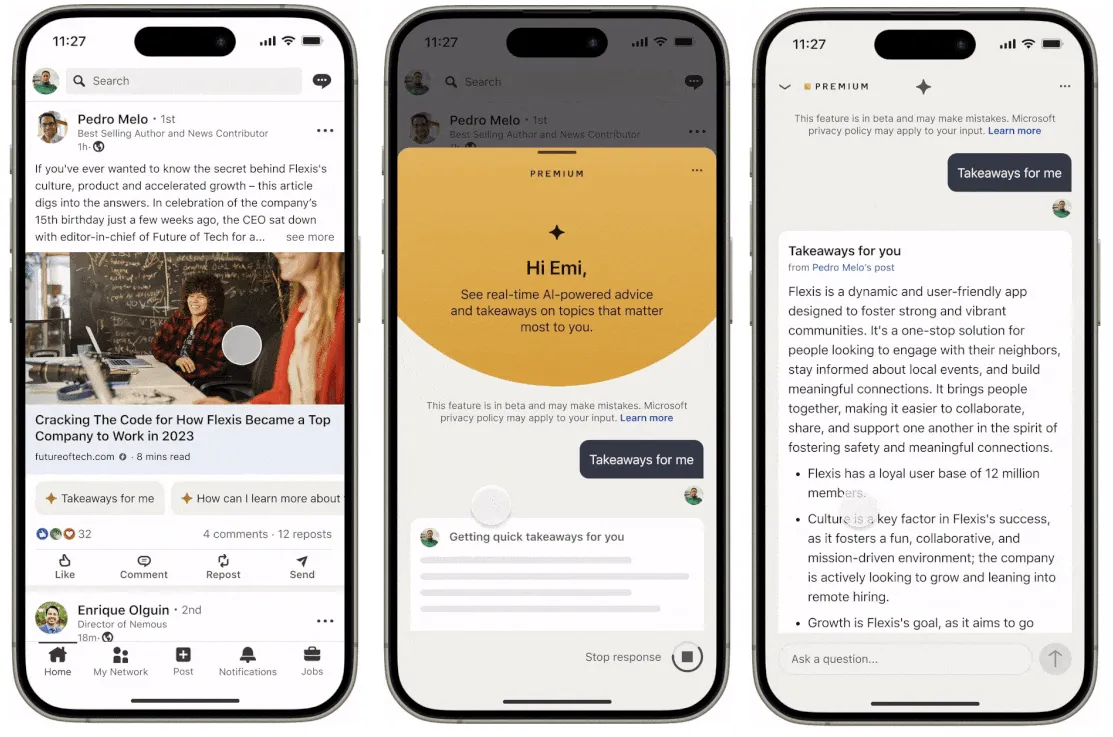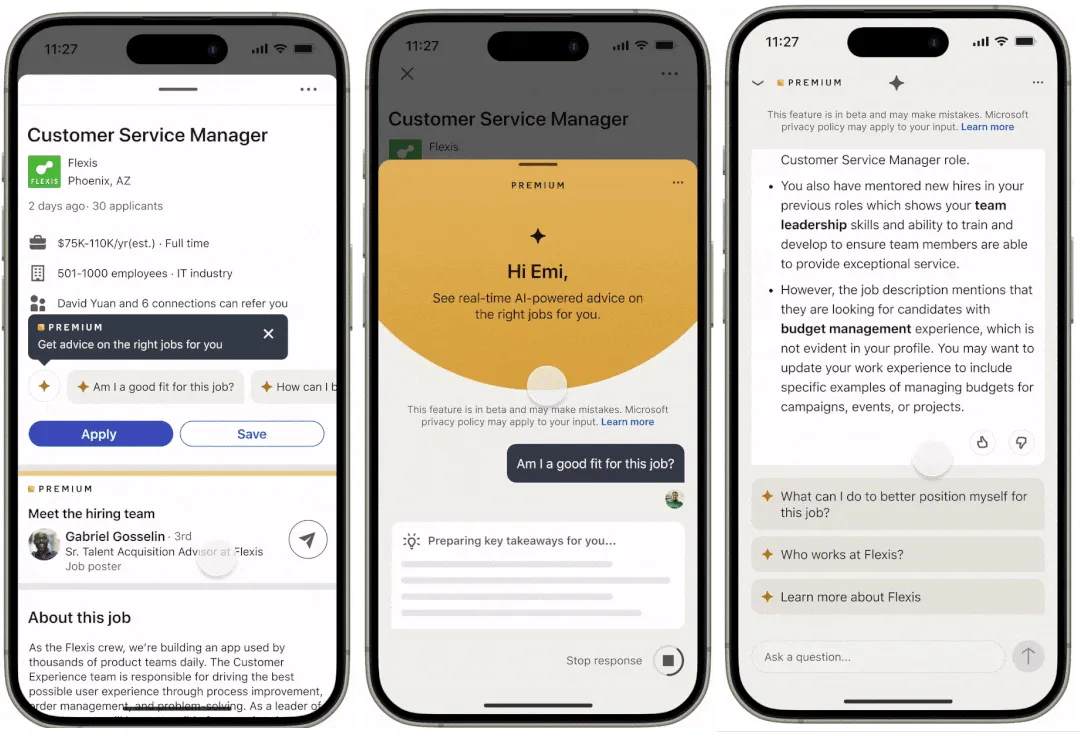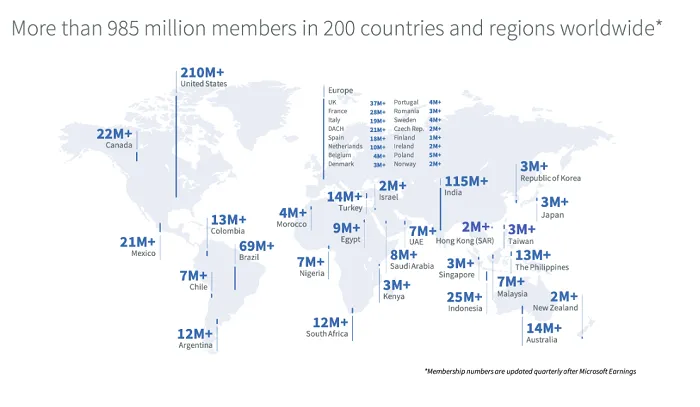“Sociable” is the latest commentary on important social media developments and trends from industry expert Andrew Hutchinson of Social Media Today.
Okay, there are a couple of significant elements in LinkedIn’s latest update that require scrutiny.
First off, LinkedIn has announced some new AI features, building on its growing suite of AI-powered options. Its latest tools, which will be made available to LinkedIn Premium subscribers only, are designed to help users make sense of their feed, job posts, etc.
Which seems concerning, but we’ll get to that.
As explained by LinkedIn:
“Our new AI-powered experience will analyze your feed’s posts (from the commentary to the article to the conversation) and reveal the key salient opportunities for you…in one simple click... in seconds. It will take on the hard work of parsing through long articles, videos, and posts and suggest ideas on how the information can be helpful to you. Then you’ll get to spend your valuable time taking action on it.”

Yeah, don’t waste your precious brain power reading through things, let this system just give you the Cliffs Notes, so that you can pass yourself off as being knowledgeable without having any in-depth insight into anything.
It seems a little problematic, on a platform where people are looking to showcase their professional expertise and insight, to have a system that would let you feign this. But sure, save yourself some time, let AI tell you what you need to know, then move on.
Yeah, maybe it’s my bias as a writer, but I don’t think that this is a good idea, or a valuable innovation. Like, you should just read the original post, not a robot-generated summary. But maybe I’m just old school like that.
Though its next AI innovation could be even more problematic.
“Our new job seeker experience reimagines what’s possible. From seamlessly assessing if a particular job is a good fit for you to identifying the best way to position yourself for it, we’ll help you find your dream role and build your confidence. With this experience, researching roles, companies, and even preparing for interviews become part of a seamless, delightful interaction on LinkedIn.”

So, this new tool will help you understand whether you should apply, essentially, by using AI to summarize the requirements, and guide your application process.
Like, if you don’t understand the job ad, or if you can’t even be bothered reading it, it’s probably not for you, right?
I don’t know, it seems like LinkedIn’s trying to wedge AI tools into places where they probably shouldn’t be, but I can also see the potential time saving benefits for job seekers who are applying to a lot of jobs at once.
But really, gaining knowledge is important, and using AI at this stage of the process seems to be guiding people towards using it for even more elements, even beyond this, and feigning expertise that they don’t have.
But maybe that’s just a cynical perspective. Though it’s likely not as cynical as this:
In addition to these new AI features, LinkedIn has also announced that it’s now reached a new milestone of 1 billion total members.
Which, if you’ve been reading my posts, you know that I don’t agree with both the metric and the math on this.
For one, LinkedIn has somehow gotten away with only reporting total member counts for years, even though every other social platform shares active user stats. Total member counts are irrelevant. X, for example, hosts more than 2 billion user profiles, though most of them are inactive, with its official user count being 250 million.
If Elon Musk were to suddenly report that X now has 2 billion members, the announcement would be ridiculed and mocked, but somehow, LinkedIn can be like ‘we’ve got a billion members’ and act like that’s a thing.
It’s not, and it also seems like it can’t possibly be accurate, based on LinkedIn’s other reports.
Just last week, as part of parent company Microsoft’s latest performance update, LinkedIn reported that it has 985 million members.

So it’s added 15 million in a few days?
It also seems to have lost no growth momentum at all, despite pulling out of China earlier this year, where it had 59 million members.
Somehow, LinkedIn’s member count remained unchanged after that. Which seems a bit odd, right?
Though again, member count, in itself, is actually not relevant, what matters is how many people are actually coming back and using the app on a regular basis.
Which LinkedIn was actually forced to share recently, under the new EU DSA regulations, which stipulate that all large online platforms have to share their active user counts in the region.
Based on that data, around 40% of LinkedIn members are actually active users, at least in Europe. And if you were to extrapolate that to other regions, you can assume that LinkedIn, at a billion members (if that’s accurate) now has around 400 million active users.
Which I pretty good, and I don’t see why LinkedIn would try to mask it behind the absolutely useless ‘member’ count.
But that’s what it’s always reported, for some reason, but for context, it seems like LinkedIn probably has around 400 million actives.
Maybe. I don’t know, their numbers are all over the place, and again, when LinkedIn has lost members, they haven’t seemed to come off that total count.
The bottom line is that LinkedIn’s adding some new AI tools, which could help people appear more qualified than they are, and it’s now up to a billion members, which is a meaningless stat.
That’s the TL;DR, no AI required.











